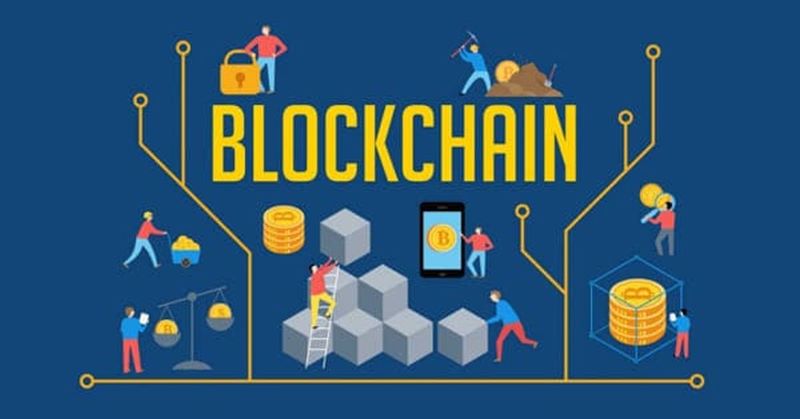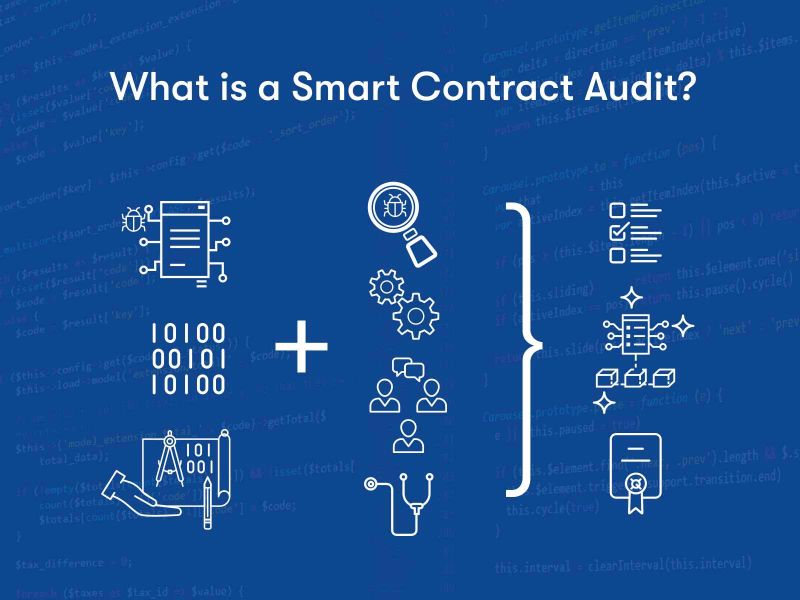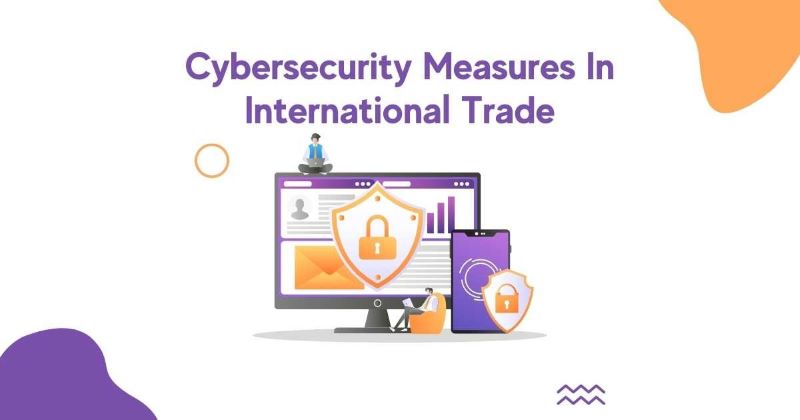Emerging trends in blockchain security are not just buzzwords; they’re the fortress walls of tomorrow’s digital assets. As your guide, I’ve witnessed firsthand the rapid evolution of these defenses. Our monetary future leans heavily on blockchain, and with that comes the dire need for iron-clad security measures. We’re not just talking minor updates; I’m here to unveil next-gen safeguards that are set to redefine what we mean by ‘secure’. From quantum-resistant tech that locks out futuristic threats, to smarter, robust audits that keep decentralized networks in check—these advances are real game-changers. Dive in, and I’ll show you how these new trends are building an impenetrable shield around our blockchain transactions.
Strengthening Blockchain Foundations: The Advent of Quantum-Resistant Technologies
Quantum-Resistant Blockchain Technology for Future-Proof Security
We’re stepping into a new age of blockchain cybersecurity advancements. The threat of quantum computers is real. They could break the encryption that keeps blockchains safe. That’s why we’re working on quantum-resistant blockchain technology. Our goal is to protect blockchains even when quantum computers become mainstream.
Quantum-resistant tech is not easy. It means making new tools that even powerful quantum computers can’t crack. Here’s the simple truth: if a blockchain isn’t quantum-safe, it’s like a bank with the door left open. But have no fear. We’re creating locks that not even a quantum thief can pick.
One big thing we focus on is making sure your private keys stay private. This is key to securing distributed ledgers. Think of it like your secret handshake. If someone knows it, they can pretend to be you. With our new tech, your secret stays safe.
Cryptographic Algorithm Updates: Enhancing Encryption Standards
Now, let’s talk about cryptographic algorithm updates. These are the secret formulas that scramble data so only the right person can read it. We keep these algorithms strong to outsmart any bad guys. It’s a bit like a constantly changing secret code. Even if someone gets a peek, it won’t make sense.
It’s not just about making the codes more complex. It’s also about making sure they don’t slow things down. You still want your transactions fast and smooth, don’t you? We work to make sure the updates are like a ninja – strong but silent.
We pay close attention to these algorithms because they guard all the info moving around the blockchain. They make sure that what you send is what they receive. Safe and sound.
You can sleep easy knowing the words, numbers, and deals you put on the blockchain are locked up tight. It’s like sending a secret message that only your friend can read. No one else even knows it’s there. These updates keep your secrets with the right person. They’re the heroes behind the scenes.
So, we stay ahead of the game by updating our secret codes and building walls even future computers can’t knock down. It’s our mission to keep the blockchain as strong as a fortress. It’s all about staying safe today and tomorrow.
Evolving Protection for Decentralized Networks: Advanced Safeguards and Audits
Decentralized Network Safeguards: Countering New Threats
If you’ve heard of blockchain, you know it’s a big deal. It’s like a digital ledger but super safe and spread out across many computers. But as it gets more popular, bad folks try to mess with it. This is where new guards come in to keep the network safe.
Think of it like a team of superheroes. They’ve got new tech to fight off villains. One gadget is a system that watches over the blockchain’s security. If it sees something fishy, it raises an alarm. This system works hand-in-hand with another cool tool—a smart lock that keeps the blockchain out of reach for hackers.
These tools work because they’re always learning. They use knowledge from past break-ins to get better at stopping new ones. It’s a never-ending battle, but with these tools, the good guys are winning.
Safety in this computer world also means making sure no one tampers with our deals. That’s where smart contract audits jump in. They check every bit of the contract code in the blockchain to find and fix weaknesses before they become problems.
This might sound like a lot. It is! But think about this. You lock your door at night, right? It’s the same with blockchain. We lock the digital doors. This way, we keep our virtual world just as safe as our homes.
Smart Contract Audit Protocols: Ensuring Integrity and Efficiency
Now, let’s chat about smart contracts. These are like robot promises that do tasks on their own when certain conditions are met. But, like any tech, they’re not perfect. That’s why we need smart folks to check them thoroughly. This is known as an audit.
An audit’s job is to spot any mistakes that could let someone do something sneaky, like stealing digital money. Audits use checklists and tests to go over the contract’s code with a fine-tooth comb. They’re looking for any hint of trouble before anyone can misuse it.
Having strong audits means we can trust blockchain more. Our digital deals are safe, and that’s a big relief. It lets us do more cool things, like send money across the world without worry or keep our personal stuff really private on the internet.
There’s even a bonus! Making these audits better means everything runs smoother and faster. It’s like a tune-up for a car. The engine (or in this case, the blockchain) runs better with a little care.
To wrap it up, new threats need new shields. And, lucky for us, smart people are working on these problems every day. Decentralized networks are safer now than ever before, and they’re only getting better. With more eyeballs on smart contracts and smarter systems watching over the blockchain, we can breathe easy. Our digital world is toughening up, and that’s good news for everyone.
We’re always moving forward, always staying alert. That’s how we make sure our future with blockchain is not just bright, but secure too.
Protecting Blockchain Privacy and Identity: The Role of Confidential Computing
Confidential Computing in Blockchain: A Shield for Data Privacy
Have you ever been worried about who can see your data? In the world of blockchain, keeping your information private is a big deal. Now, we have something called confidential computing. It’s like having a secret space where your data can hide. No one else can peek inside. Not even the people running the servers!
Here’s how it works. Imagine you’re sending a secret note in class. Confidential computing makes sure only the friend you’re passing the note to can read it. It keeps your note hidden from nosy classmates and even the teacher. Now, swap out the note for your data on the blockchain. It gets locked up tight when it’s being used or moved. This way, hackers can’t steal it.
Self-Sovereign Identity Protection: Empowering User Privacy and Control
Have you ever wanted to be the boss of your own identity? Well, that’s what self-sovereign identity does. It lets you control your personal info on the blockchain. No more relying on companies to keep it safe for you. You get to decide who sees what and when.
Think about when you play a game and use a nickname. That’s a bit like self-sovereign identity. You share only what you want. No one needs to know your real name or where you live unless you say so. It gives you power and keeps you safer. When you use blockchain, these tools mean stronger privacy, just like superheroes use shields to protect themselves!
Ensuring Comprehensive Security in an Interconnected Blockchain Ecosystem
Interoperable Blockchain Security: A Collaborative Approach
Working together keeps us safe, right? This goes for blockchains too. In simple words, interoperable blockchain security means blockchains talk to each other securely. We make sure of this with special security that works between different blockchains. Imagine a safety net that connects, covering not just one but many trampolines.
As an expert, I dig deep into this stuff. Let’s dish out some real examples. Say two blockchains need to share info. They use what’s called ‘cross-chain security protocols.’ It’s a bit like passing secret notes, but in a way that no one can peek at what’s inside. This demands a sharp eye for gaps that could let in a cyber sneak. To do this well, we have to stay a step ahead with the latest security tricks.
So, how do we double-check that everyone plays by the rules? We test and check them with something called ‘smart contract audit protocols.’ Smart contracts are like promises in code. They run the show on blockchains. But even these need a check-up to avoid any sneaky bugs.
DLT Cybersecurity Measures: A Versatile Defense Strategy
Cybersecurity for DLT, or Distributed Ledger Technology, isn’t a one-size-fits-all. It’s like having different locks for different doors. DLT cybersecurity measures keep our blocks locked tight. One way to do this is with ‘node security solutions.’ Nodes are the key players in a blockchain network. They need to be tough against hacks, like a fortress. Here, we’re inspired by ants; they all work together to defend their hill.
Everyone’s talking quantum-resistant blockchain technology. It’s our shield against super-smart computers of the future. They could crack codes like nuts. But we’re preparing now, crafting locks not even a quantum computer could pick.
Now, imagine a sentry that never sleeps. That’s our ‘blockchain intrusion detection systems.’ They watch over our blockchain, day and night, always on the lookout for anything fishy.
Keeping all this safe is no small job. We keep our ear to the ground with ‘blockchain threat intelligence.’ Knowing possible dangers lets us act fast, like having an ace up our sleeve. It’s not just about spying on threats. We also use ‘confidential computing in blockchain’ to keep your secrets, secret. It helps cover our tracks, leaving zero clues for nosy parkers.
To tie it all neatly in a bow, ‘private key management’ is our bread and butter. It’s all about keeping the keys to the kingdom… well, key. Lose them, and uh-oh, trouble. And we’re talking big trouble!
As for me, I geek out over these puzzles daily. It’s like a game of high-stakes hide and seek. I’ve got to keep the valuables hidden while staying a step ahead of those looking for them. This is the world of blockchain security. And let me tell you, it’s one thrilling ride that never slows down!
In this post, we dived deep into safeguarding blockchain against future threats. We kicked off discussing quantum-resistant technology. This tech is key for strong security looking ahead. We also touched on the need to upgrade encryption methods to stay ahead of hackers.
We then looked at ways to protect distributed networks, focusing on new safeguards and regular audits. These steps are crucial to keep shared data safe. Making sure smart contracts are solid and effective is part of this.
Next, we talked about blockchain privacy. Confidential computing and user-led privacy keep personal data safe on the blockchain. This means you control who sees your info.
Finally, we covered keeping the whole blockchain ecosystem secure. Working together on security and having many defense layers mean a safer system for everyone.
I’ll leave you with this—advances in blockchain protection are moving fast. Staying informed and prepared is the best defense. Keeping data safe is a must, and these methods are leading the way.
Q&A :
What are the new developments in enhancing blockchain security?
Blockchain security has seen several new developments to strengthen its infrastructure. Innovations such as quantum-resistant cryptography, which counters potential threats from quantum computing, are being researched actively. Additionally, the use of Zero-Knowledge Proofs (ZKPs) to facilitate transaction privacy while maintaining transparency is an emerging trend. More robust consensus mechanisms are also being developed to prevent 51% attacks and other vulnerabilities.
How is decentralization impacting blockchain security trends?
Decentralization plays a pivotal role in blockchain security. As more nodes participate in the network, the distributed nature of blockchain becomes more pronounced, making it harder for malicious actors to compromise the system. Emerging trends involve increasing the number of nodes and ensuring a truly decentralized structure to prevent any single point of failure. The integration of multi-layered security protocols within blockchain networks is also a significant trend, further improving security through decentralization.
What role do smart contracts play in the evolution of blockchain security?
Smart contracts are self-executing contracts with the terms of the agreement directly written into lines of code. They play a critical role in blockchain security by automating and enforcing contracts without the need for intermediaries. With the evolution of smart contract technology, there is a growing trend towards creating more secure and bug-resistant programming languages and auditing methods to ensure that these contracts are executed as intended without vulnerabilities.
Are there specific security risks associated with blockchain implementations in IoT?
Blockchain implementations in IoT are subject to unique security risks, primarily due to the vast and distributed nature of IoT devices, which may not have robust built-in security features. There is a trend towards developing specific encryption methods and security protocols to secure the data transmitted between IoT devices and blockchain networks. Moreover, the trend of incorporating blockchain to enhance IoT security by creating immutable data records and secure, distributed communication channels is gaining traction.
What trends are shaping the regulatory environment for blockchain security?
As blockchain technology becomes more prevalent, regulators are considering frameworks to ensure the security of blockchain systems. One trend in the regulatory environment is the proposal and implementation of standards and certifications for blockchain systems, designed to protect consumers and businesses. There is also a trend towards international collaboration to develop consistent policies that address blockchain security, AML (anti-money laundering) compliance, and KYC (know your customer) procedures, to name a few.




RELATED POSTS
What is Tokenized Real Estate? – Unlocking Global Investment Opportunities
What Is Tokenized Real Estate?...
Easily Join the TENEO Airdrop with This Step-by-Step Guide
The TENEO Airdrop is a...
Blockchain Breakthrough: Expanding Education in Developing Nations
Unlocking Education in Developing Countries:...
Mitigating Risks of Majority Mining Attacks: Your Crypto Safety Plan
Mitigate risks of majority mining...
Unveiling Blockchain: Surprising Uses Beyond Cryptocurrency
Applications of blockchain technology go...
Blockchain and Bureaucracy: How will governments use blockchain in the future?
How will governments use blockchain...
Blockchain Breakthrough: Sources of funding for blockchain research
Sources of funding for blockchain...
On-Chain Data Analysis Instructions: Unlock Crypto Market Secrets Now
Grasp the basics of on-chain...
Starknet: A Layer-2 scaling solution for Ethereum
Starknet is rapidly gaining traction...
How does blockchain technology help organizations when sharing data
Wondering “How does blockchain technology...
Blockchain Technology in Healthcare – A Breakthrough Comprehensive Solution
Interested in “Blockchain Technology in...
Solayer Airdrop – Secrets to Maximizing Profits
To maximize profits from the...
How does blockchain improve security: Enhancing Security in a Digital Age
How does blockchain improve security?...
What is Proof of Elapsed Time in Blockchain? Unveiling the Mystery Behind Efficient Consensus
What is Proof of Elapsed...
Phishing Attack in Crypto Uncovered: Secure Your Digital Wealth Now
"What is a Phishing attack...
Not Pixel Airdrop – Optimize Profits from Pixel
To optimize profits from Not...